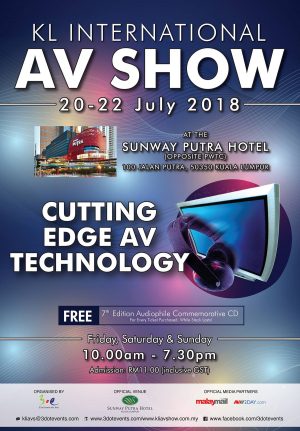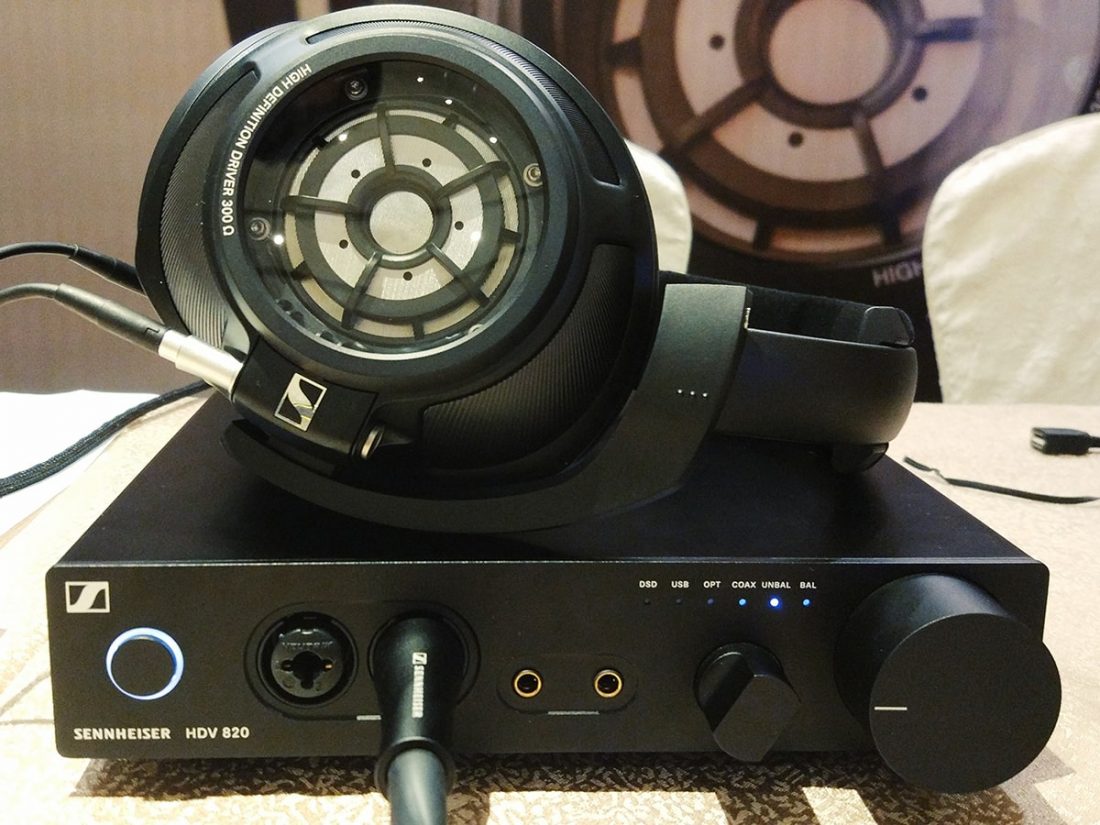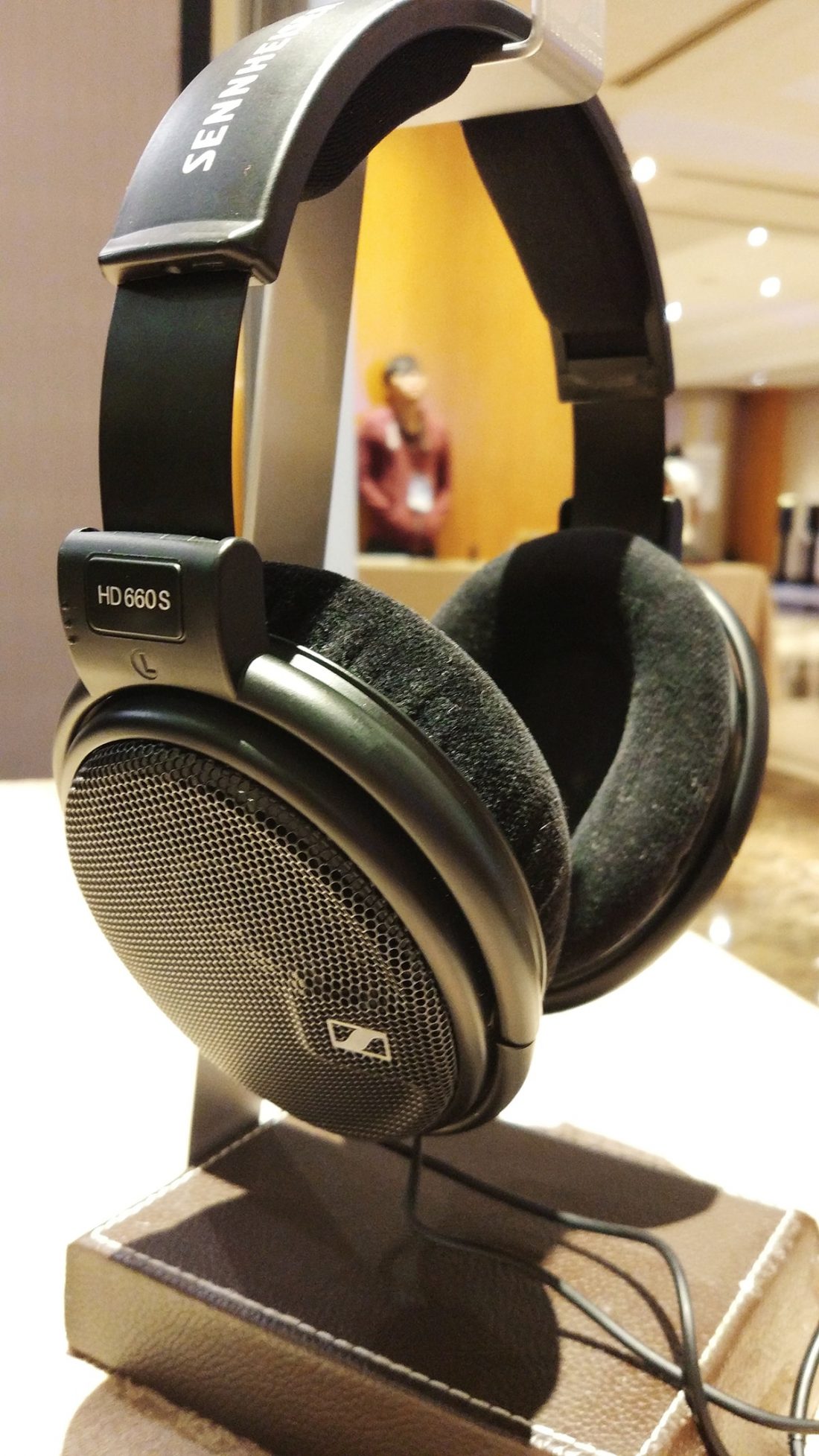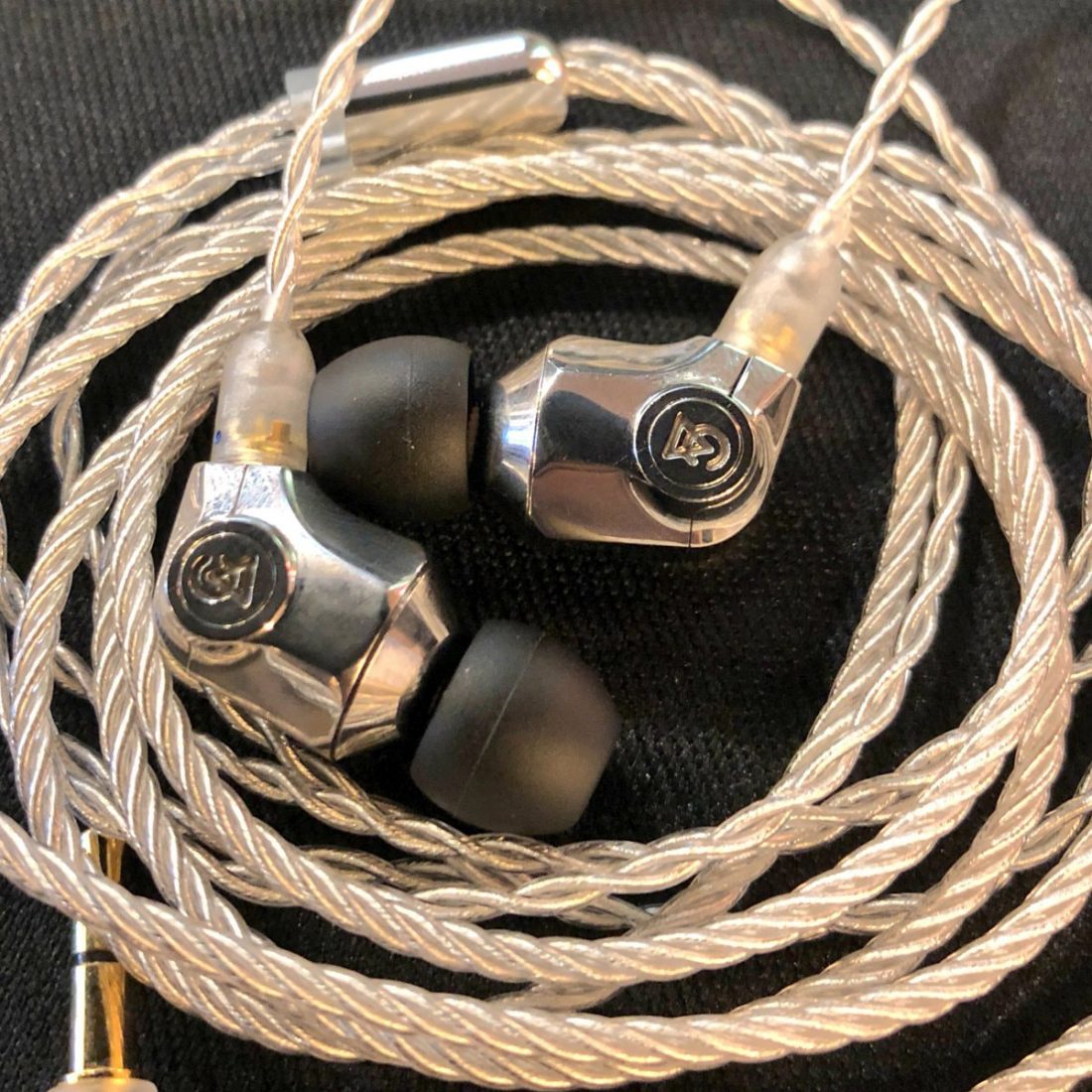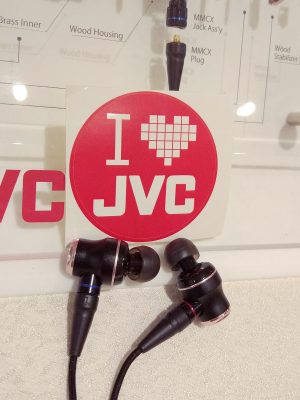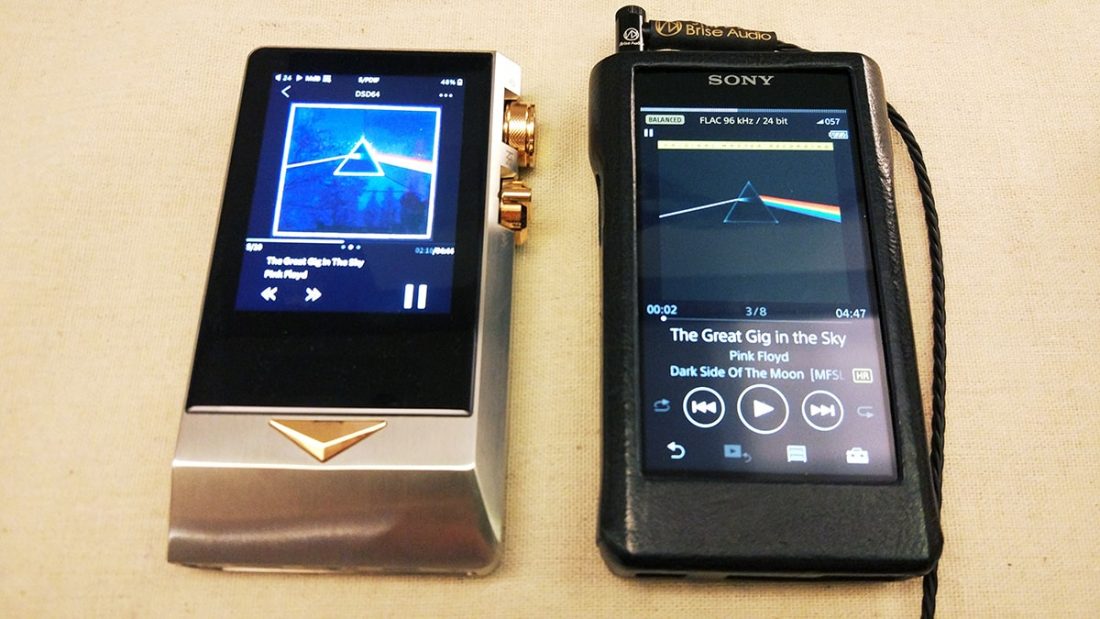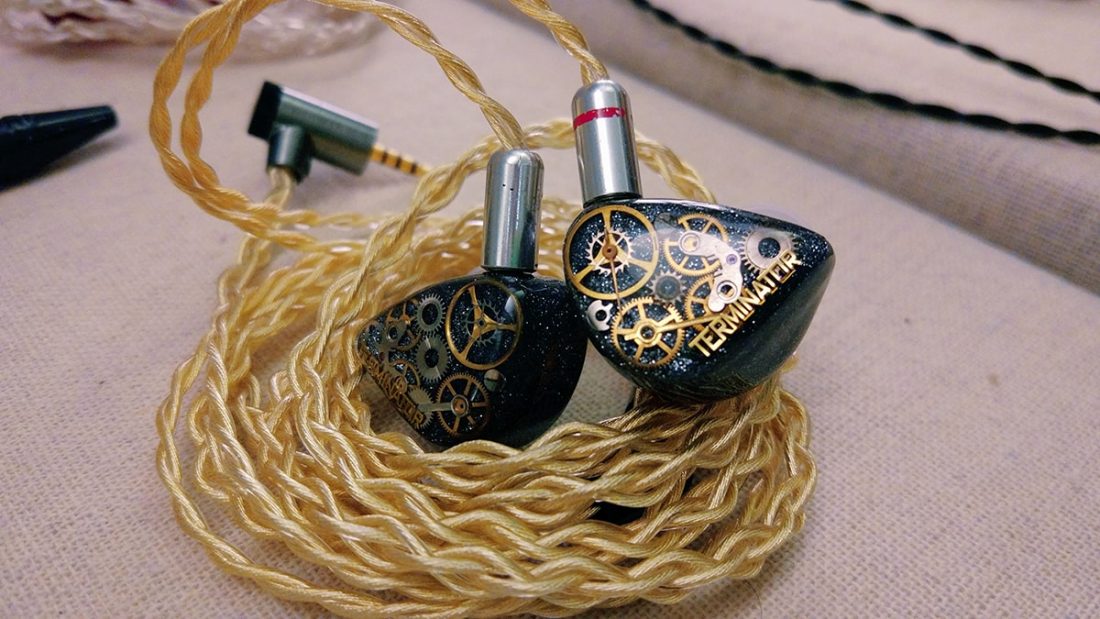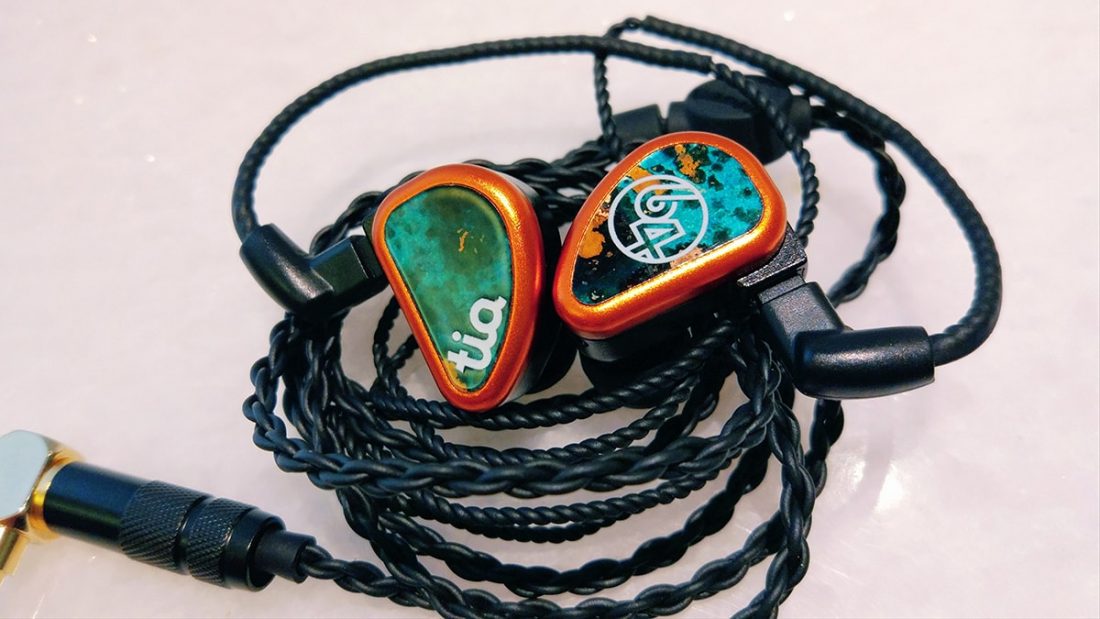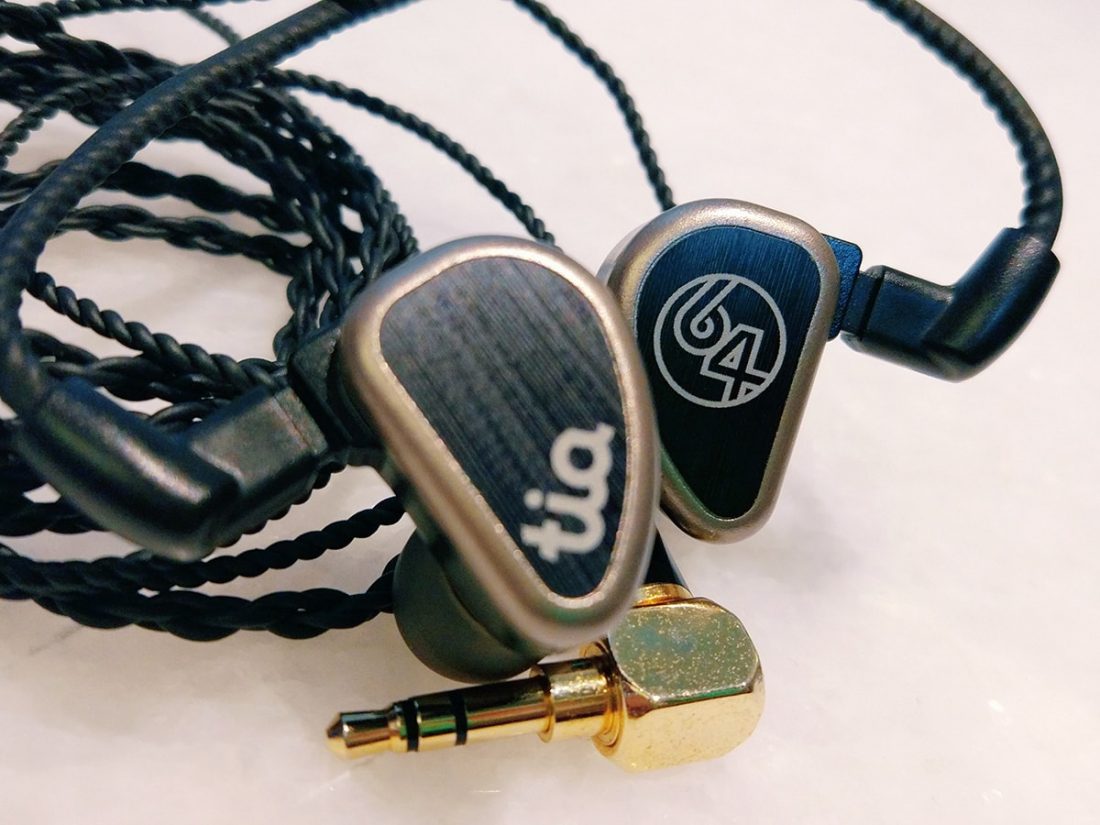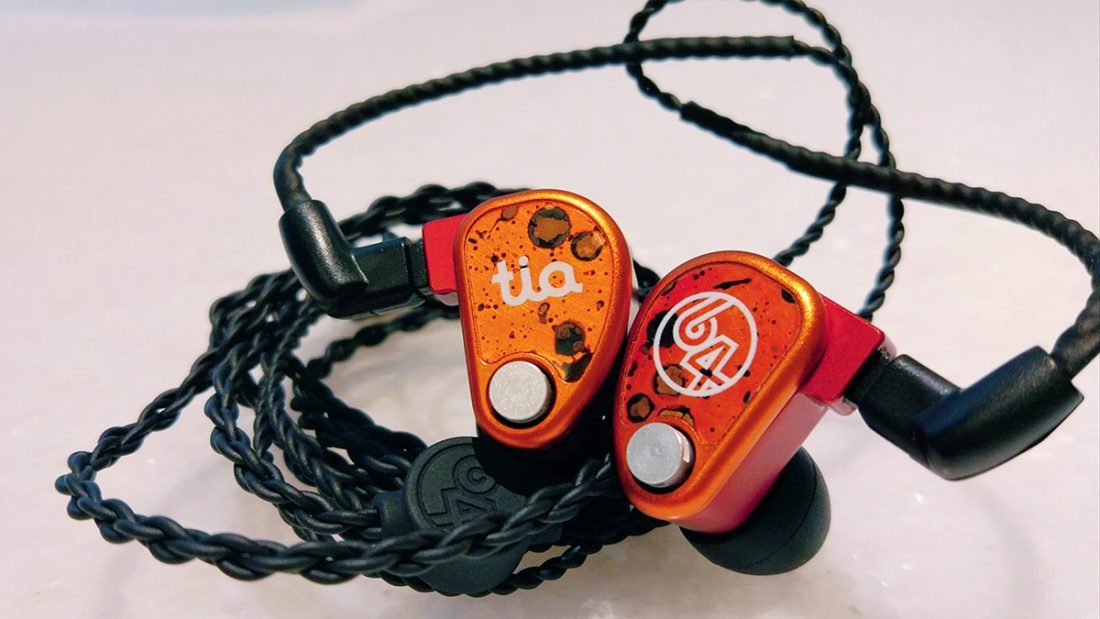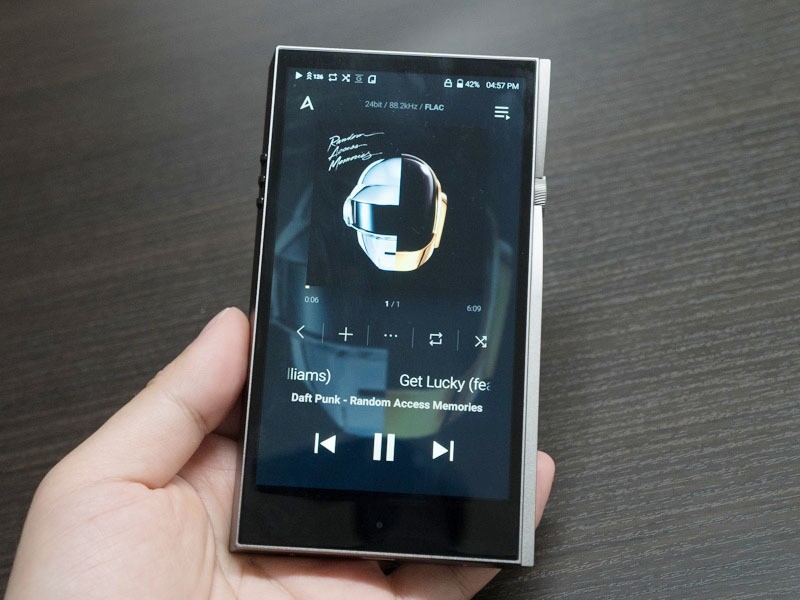The annual KL International AV Show (KLIAV) was held from 20th to 22nd July in Sunway Putra Hotel, Kuala Lumpur. It was organised by 3 Dot Events and is now into its 25th year. I guess my time wasn’t up, as there were still uncharted frontiers to blaze. Curiosity got the better of me when Uncle David from E1 Personal Audio (an exhibitor) e-mailed about bringing over a few flagship-tier earphones from 64 Audio that I have yet to hear. Turns out all I needed was an excuse to attend. I went on my best behaviour for days, applied for two days’ annual leave from my wife, and got going. Once again, this is not a comprehensive report of the entire show. I focused only on earphones, headphones and its related gear. Speakers, record players and projectors are beyond me. They do not welcome me, nor do I have six figures to spend. hehe.
Gear Used:
Sony WM1A “K” Modded (FW2.0, low gain) Empire Ears Legend X Jomo Audio Flamenco Effect Audio Ares II 4.4mm balanced cable
Albums Listened:
The Eagles – Hell Freezes Over Fleetwood Mac – Rumours Amber Rubarth – Sessions from the 17th Ward Daft Punk – Random Access Memories Ed Sheeran – Divide
With a full day of ear exercises ahead, I dove head-first into products that tickled my fancy (no, not there) most. As always with shows, because of noise levels from attendees and speaker systems, coupled with ear fatigue, my impressions might not be entirely accurate. I start with flagship products first and work my way down. Hit me with your best shot (no, not there), fire away. To the main floor of the expo I go.
Sennheiser HD820
We commence with something that has garnered tons of attention, Sennheiser’s first top-of-the-line (TOTL) closed headphones, the HD820. At USD2400 they have a lot to live up to. Sennheiser never fails to impress with their looks. Imagine HD800S with Gorilla Glass covers at the sides. The build is superb and they fit comfortably on me head. As for the sound, I expected flagship-tier HD800S-like wide open soundstage with pinpoint imaging but was left disappointed. The soundstage was narrower than expected, just very deep, like listening to music in a tunnel. I knew compromises had to be made for a closed headphone, but they don’t isolate very well either! The speakers blaring nearby could be heard loud and clear.
So What Went Wrong?
Analysing the sound further, the signature takes on a slight V-shape with accented bass and treble. The bass, while fairly fast and accurate, has an emphasised midbass that I do not associate with Sennheiser cans. The treble has excellent extension and sparkle and is easily the best part of the spectrum. The mids, however, take the biggest hit. They are thin and reedy with a weird tone and a hollowness to the note body. This made me wallow in dismay, thinking that the much better HD800S can be had for a lot cheaper. It’s a mixed bag for sure, but I hope Sennheiser come back with marked improvements in HD820’s next iteration.
Sennheiser HD660S
Let’s try again after the false start, shall we? The HD660S is an update to the evergreen HD650, a much-loved staple of headphonedom. Frequent followers will no doubt hear about the infamous “Sennheiser veil” plaguing the HD650, with the theory saying that Sennheiser cans are overly warm and treble-fearing. The 660S was created to fix that mindset, permanently. And by Jove (or is it Jose?), this is a GREAT can! The sound is intricately balanced, with just the right amount of bass, playful treble sparkle and damn good mids. Vocals and instruments sound lifelike, intimate, and positively mesmerising. There are gobs of air in between the instruments so the music breathes freely, despite the slight warmish tone and good note body.
Mastery in Tone and Control
The 660S shows off its mastery in tone and control, not one part of the signature emphasised over the other, resulting in a frighteningly enjoyable listen. The only qualm is a slightly small soundstage, but with a tone as good as this, and at a world-ending price of USD500, I much prefer this over the HD820. Endgame? We are just getting started.
Sennheiser HD650
Would you believe that in 5 years of dabbling in head-fi, this would be the first time I’ve listened to the legendary HD650? Strange but true. The HD650 has world-renowned rich and alluring mids that is able to convert anyone who originally prefers a sterile, neutral sound. The mids are where the magic is, and the HD650’s creamy, dreamy rendition has collected legions of fans over the years. Compared to the HD660S though, it seems the HD650 has to finally give in to its successor. None of the mids magic is lost, and you get a boost of clarity and more present treble for a better-balanced sound. The 650 might have rounder note edges, but the added element of fun from the 660S is very hard to resist.
Sennheiser HD600
A long time ago, the world was divided into two sets of people; those who prefer the neutral and detailed HD600, and in the other camp, the warmer, richer HD650. Listening to HD600 for the first time, I thought the 660S was superior in every way. Its detailed, rich and fun signature runs laps around the 600, making it sound anaemic and boring in the process. I could tell you the winner within seconds of listening. The 660S combines the tonal body of HD650, with the detail levels and treble accents of HD600, into a total package made of pure win. Practically a best-of-both-worlds, have-your-cake-and-eat-it scenario. I’ll cut down on the cliches, I promise.
Campfire Audio Atlas
Ken Ball, prolific Campfire chief, is always up to something. My favourite creation of his is the Andromeda, an earphone that needs no introduction. This year he unleashed upon us two brand new IEMs, the Comet, and Atlas. Sporting single dynamic drivers in a chrome shell, the larger Atlas is a new flagship and maybe-replacement for their previous bass monster, Vega. Atlas is no doubt, well-built, as expected from Campfire offerings. The chrome shells will surely invite micro-scratches later on, but that won’t be my concern today lol. Let’s move on to the sound. Overall it’s a V-shaped monitor fashioned after Vega, bass-heavy and authoritative.
Grander and Grander
The bass hits with great aplomb, it’s full-bodied, with a thundering slam and lovely decay. There is some bleed to the mids due to a midbass hump. The mids are located further back and sound neutral and smooth, but not prominent enough. In the upper registers, the treble can get raspy and tizzy. There is decent sparkle but it’s peaky to my ears. There a certain grandness to Atlas’ presentation, hence its epic name. The soundstage is also dutifully wide and expansive, with adequate separation and good dynamics in the signature. Maybe it’s just me, but I don’t see myself coveting another V-shaped monitor. Atlas has its fans but I’ll pass.
Campfire Audio Comet
At USD200, Comet is like Atlas-lite, with a smaller shell and friendlier ergonomics compared to its big brother. The sound signature is also V-shaped (surprise, surprise), with average stage dimensions which resemble a putting your head inside a box. The bass, again, has good reach and slam. The mids are located behind the bass, and lack character and presence. The treble is muted if compared with Atlas, which might actually be a good thing. It delivers decent amounts of detail and sparkle to keep things going. Overall though, the stage size is too small and signature too lacking in dynamics for me to fully dive into the music with it. Andromeda is still at the top of the Campfire pile for me.
JVC HA-FW01
JVC! That’s a brand you don’t hear very often (unless you’re an Arsenal fan). I once owned the renowned FXT90, a fun, engaging IEM with horrible timbre. From there, JVC went on to their famed “Woodies” line, like the FX850 and the bass armageddon IEM, FX1100. A few updates later, and we arrive at the FW01. They love their wood. No, not that. JVC has always opted for a full, natural sound, and the FW01 is no different. The bass is bold and audacious, with equal amounts of subbass reach and midbass bleed. The mids, as if not wanting to be outdone, are rich as hell as well, with excellent body to the notes and good timbre thanks to the wood housing. To balance out the mellow warmth that threatens to implode the signature, the lower treble is emphasised and sounds a bit tizzy, but quickly rolls off before causing anymore trouble. The stage size is small and separation is so-so, so listening to the FW01 is like devouring a full meal with your ears. Not my cup o’ tea, but you do you, JVC. With the main floor exhibits done with, I moved to another floor where exhibitors display their wares in hotel rooms. Do they sleep in the same room at night, with their favourite gear lulling them to blissful slumber? Probably. I forgot to ask. I visited the Stars Picker rooms first, and their selection is just on fire (figuratively) this year.
Cayin N8
Cost no object. That already tells you it’s gonna hurt the wallet real bad. What’s even worse is, Cayin’s new flagship digital audio player (DAP) N8 doesn’t even have a price tag yet. While awaiting that suckerpunch to be announced, how is it? We already know that it has two modes, solid state, and vacuum tube outputs, so that’s two sides of delicious to explore. First off, it’s heavy! It’ll give your arm a nice workout if you carry this around. Build quality is faultless, it looks solid and could probably survive a rumble in the jungle, a mounting and a pounding. The interface is laggy but intuitive, I hope they get this sorted out in future firmware.
Analog For Life
The balanced solid state mode is richly analog, with high detail levels and a very engrossing sound signature. Notes are buttery, well-rounded and full, it’s a truly musical experience. The single-ended vacuum tube output turns up the warmth further, at the expense of detail levels and soundstage size. Fans of tube amps would enjoy this, but I prefer the solid state way more. Compared to my K-modded WM1A, the 1A sounds brighter and more spacious than either N8 mode. Notes are more textured, immediate and less rich, a more on-your-feet approach as opposed to the armchair listening of the N8. I do think they both perform at the same level. Yay me.
Elysian Acoustic Labs Terminator
Meet the first Malaysian custom IEM maker. The brains behind Elysian, Lee, is always tinkering and updating his product line, culminating in his latest flagship, named after Arnold. I kid, I kid. The Terminator is an 8 balanced armature (BA) IEM embodying Lee’s tuning philosophy, a full-bodied, immersive sound resembling high-end speakers.
The Arnold
The bass and mids are bold, forward and well-rounded, with an unmistakably warm and organic tone. It is coloured, veering towards natural-sounding, but my, the full notes take some getting used to. It’s bold like the strongest long black you’ve ever drunk (Drank? Drinked? Drankened?). The treble takes a step back, sounding smooth and liquid in comparison to the rest of the signature. The full-on musical assault takes a brief respite via a cube-like, 3D soundstage. There is just enough width, depth and height for the music to go around. But again, the signature is divisive, and the price is, well, a cool USD2500. It’s best to listen for yourself to decide whether the sound suits you. Keywords are full, bold, and forward, like a male cologne ad.
Elysian Acoustic Labs Poseidon
Lee has another 8-driver up his sleeve, the Poseidon. Compared to Terminator, Poseidon is lighter and airier, with lesser midbass focus and a more balanced tuning overall. Make no mistake, the Elysian house sound is still very intact. I prefer this tuning, just that Poseidon is hampered by a small soundstage with a very in-your-head presentation. If that was Terminator, this is probably Sherminator. 2pm and it was time for my appointment with Uncle David from E1. I went to his room giddy with anticipation, having read so much, but never heard any of the 64 Audio flagships. Thinking back I might also have been hypoglycaemic. Without further ado, the fantastic four. Or fab four.
64 Audio Tia Fourte
At an obscene USD3599, you better believe the price. It shocked and awed when it was announced, and it was 64’s way of saying “yeh, we’re that good.” Heh. The in-house produced Tia drivers are opened-up BA drivers, delivering sound via a resonance chamber rather than traditional sound tubes. Like BAs unleashed, the lack of tubes brings out heightened detail levels.
Jaw-dropper
Where do I begin? The Tia Fourte sounds… special. The first thing you notice is how unbelievably large the soundstage is. I’ve read about it, and I can’t still wrap my mind around it, but here it was, a stage size that bests open headphones easily. The Fourte is big on wow factor (insert wow cat gif here), and the stage size was just the beginning. Fourte seems to use every trick in the book to maximise air and stage dimensions. That is reflected in the tuning. Subbass is elevated, as is the upper treble. Bass notes are thick, organic and rounded with subbass emphasis, mids are crystal clear and articulate, and as for the treble, detail levels and extension are through the roof, blown sky-high.
Supersized
Combine the visceral bass and the hyper-realism of the treble, balanced by the clear and grounded mids, aided by the insane amounts of air and blown-open stage size; and you have an exciting listen that is always turned on. No other earphone I’ve heard renders music as unique as the Fourte. However, its weakness has always been there and staring at you, longingly. It is strikingly incoherent, with the organic-sounding dynamic driver (DD) bass different from the rest of the articulate, detail-first signature of the Fourte. I might not be able to deal with that, but maybe you can. In summary, Fourte. Big-ass stage, big-ass wow factor, big-ass price. Everything is supersized!
64 Audio Tia Trio
Perhaps there was a demand for an alternative signature after the crazily-divisive Fourte. Regardless, 64 released Tia Trio at a lower, albeit still astronomical price point, yours for merely USD2299. As for the sound, the signature is reined in and forced to learn some restraint. This is Fourte after getting married, paying insurance premiums and growing older.
The Tax-Payer
Notes are fuller and less edgy, with a smoother, mellower tone. The wow factor from the Fourte is gone, replaced by a more controlled “tax-payer” behaviour. Detail levels across the spectrum are still very much there, just devoid of histrionics. Timbre is improved, and listening to Trio is much less fatiguing than Fourte. The trade-off? The stage size is quite a bit smaller, as is the excitability factor. Still, 64 might have stumbled into their best all-rounder yet. As an aside, the Trio sounds remarkably alike in tone with my Empire Ears Legend X, but with less bass and more extended treble. They are similarly priced too. Maybe for most, Trio is all you need.
64 Audio U18t “Tzar”
If Fourte is a flashy race-car driver, U18t Tzar is a surgeon. Clinical and precise to a fault, Tzar is born to dissect and analyse. Like the frog/mouse you massacred in high school, Tzar lays bare the elements of music with incisive cuts of a musical scalpel. Before I run out of medical terms, Tzar is borderline analytical by the way it retrieves detail, but injects the signature with a dollop of fun. Again, I must mention the insanely wide soundstage, probably with only Fourte as company. Depth is much lesser compared to the width, but as a result the Tzar has the best left-to-right separation I’ve ever heard in an IEM. The surgeon at work! Every note is clean, quick, well-defined with cool machined edges, and lots of air around it. It’s technical almost to a fault.
The Fun Surgeon
Thankfully, the surgeon likes to have fun too, like a whiskey at the clock-off time. This is evident by the midbass bump, slightly forward mids and heightened lower treble, amassing an exciting, no-holds-barred fun signature. It lacks the pristine, “my air is fresher than yours” space and cleanness of the Fourte, but replaces it with a level of engagement even Fourte can be in awe of. With such a signature, you can probably guess that instrument timbre is bright. The Tzar says yes that may be, but unapologetically throws at you air, texture, extension, resolution, sparkle and sizzle, hoping you’d forget about it. Tzar is one-of-a-kind and knows it.
64 Audio U12t
I hate to say this, but after listening to the full stable of 64 Audio’s best (and priciest), U12t sounds rather flat. As a USD1999 IEM, it lacks the character to stand on its own compared to its brethren. It is no doubt, very competent technically, but nothing it has shouts “buy me”, as if I have USD2k lying around lol. The U12t is the most neutral of the lot. The bass has a BA-like tuning, with even hits but lacking dynamics. Mids are clear and smooth, with a brightish timbre. Treble has the trademark airy extension as well, and a nice shimmer. Soundstage is deeper than it is wide, and imaging is very good. It is, as I’ve said competent, you won’t feel like you’ve wasted your money. It’s just not as distinguishable from other flagship tier IEMs as is. Nice guys finish last.
Astell&Kern A&Futura SE100
Uncle David had this lying around, so why not? Last year I was floored by the peerless technical ability of the A&Ultima SP1000 SS, their USD3500 flagship. The speed, detail retrieval and resolution of the SP1000 made me hear things from another dimension, breathed new life to old music and left me with a pleasant buzz for the next few days, if that was possible. At half the price, the A&Futura SE100 promises half the performan… wait I’ll start over. The SE100 is made with a light aluminium casing and feels solid in hand. It comes with unique angles seemingly for exclusive left hand handling. Sorry if you use your right, it’s going to be awkward. The user interface as with all A&K DAPs is fast and friendly, like a smartphone. Let’s get to listening.
Once Popped, You Cannot Stop
The SE100 sounds neutral and spacious. It lacks the jaw-dropping micro-detail retrieval of the SP1000 and the supernatural air around each note, but in turn, musical presentation is more natural and rooted. Notes segue into each other with smoothness and coherency. When compared to my modded WM1A, note size is thinner and airier, with slightly less dynamics. What it lacks in authority and weight it makes up for with spaciousness and a more relaxed, non-fatiguing sound. What can you eat all day without batting an eye? Pringles. It’s a signature hard to hate, and can handle any musical genre or transducer with great adeptness. With a (relatively) good price tag to match, A&K’s signature sound is not just for the super-rich elite. My two hours with Uncle David up, I thanked him profusely with the demeanour of an excited puppy. It was time to head to the Stars Picker room again to listen to some headphones for a change of pace.
